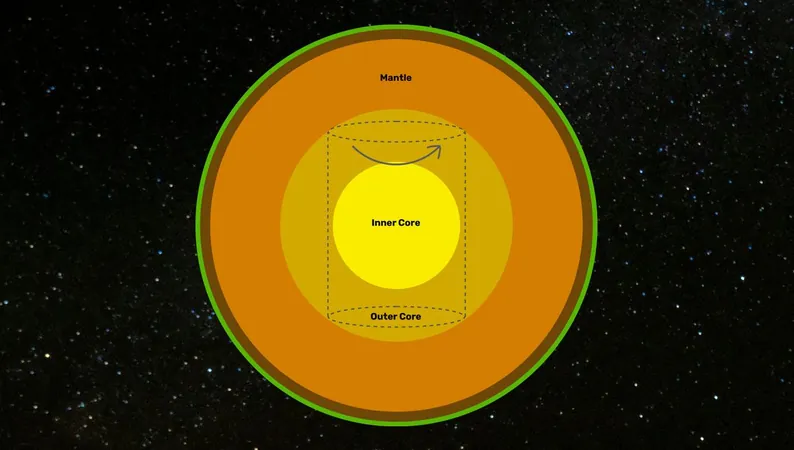
Groundbreaking Discovery Challenges Our Understanding of Earth’s Magnetic Field Formation!
2024-11-05
Author: Mei
Groundbreaking Discovery Challenges Our Understanding of Earth’s Magnetic Field Formation!
In a remarkable breakthrough that could reshape our understanding of the Earth's magnetic field, a team of researchers has unveiled unexpected findings regarding the flow of molten metal in the planet's core. This significant research is crucial, as the magnetic field serves as a protective shield against harmful solar radiation and other cosmic phenomena, making life on Earth possible.
The Earth's interior is composed of a solid inner core surrounded by a liquid outer core of molten metal, primarily composed of iron and nickel. For decades, scientists have theorized that the motion of this molten metal, governed by convection, plays an integral role in generating the magnetic field. However, new evidence suggests a much more complicated picture.
Utilizing one of the planet's most powerful magnets in an experiment dubbed the "Little Earth Experiment," researchers have tested their hypotheses about the dynamics within the Earth's core. This experiment is conducted in a specially designed apparatus capable of producing magnetic fields exceeding 10 Tesla—an astounding 100 times more powerful than the strongest natural magnet, found in sunspots.
Professor Alban Pothérat from Coventry University explained that they filled a model of the Earth with a 30% concentration of sulfuric acid—a liquid that is both transparent and an electrical conductor. As they observed the fluid's movements under simulated conditions, the researchers noted an intriguing behavior: instead of following expected patterns, the fluid exhibited unexpected inflow from the top and outflow at the bottom of the cylinder, defying traditional theories of fluid dynamics in rotating systems.
This unexpected behavior raises profound questions about the established Taylor-Proudman theorem, which predicts that rotational forces create stable motion patterns in a cylindrical arrangement. The researchers suspect that the magnetic field itself influences the flow of molten metal, creating a feedback loop that complicates our understanding of how Earth's magnetic field operates.
The implications of these findings extend far beyond theoretical physics. Understanding the mechanisms by which the magnetic field is generated could have profound consequences for our knowledge of geological processes, climate change, and even space weather phenomena. Additionally, this emerging understanding could pave the way for new research into various planetary formations and their magnetic fields, providing insights that contribute to topics such as exoplanetary studies.
Looking ahead, the team aims to refine their models to incorporate more complex geometries that mirror the real Earth's conditions—accounting for factors such as varying temperatures and materials within the outer core. This next stage of research could provide deeper insights into the fundamental behaviors driving Earth's magnetism and its impact on our planet's evolution.
As researchers continue to peel back the layers of our planet's mysteries, one thing is clear: the Earth is full of surprises, and each discovery brings us closer to understanding our dynamic home in the cosmos!


 Brasil (PT)
Brasil (PT)
 Canada (EN)
Canada (EN)
 Chile (ES)
Chile (ES)
 España (ES)
España (ES)
 France (FR)
France (FR)
 Hong Kong (EN)
Hong Kong (EN)
 Italia (IT)
Italia (IT)
 日本 (JA)
日本 (JA)
 Magyarország (HU)
Magyarország (HU)
 Norge (NO)
Norge (NO)
 Polska (PL)
Polska (PL)
 Schweiz (DE)
Schweiz (DE)
 Singapore (EN)
Singapore (EN)
 Sverige (SV)
Sverige (SV)
 Suomi (FI)
Suomi (FI)
 Türkiye (TR)
Türkiye (TR)